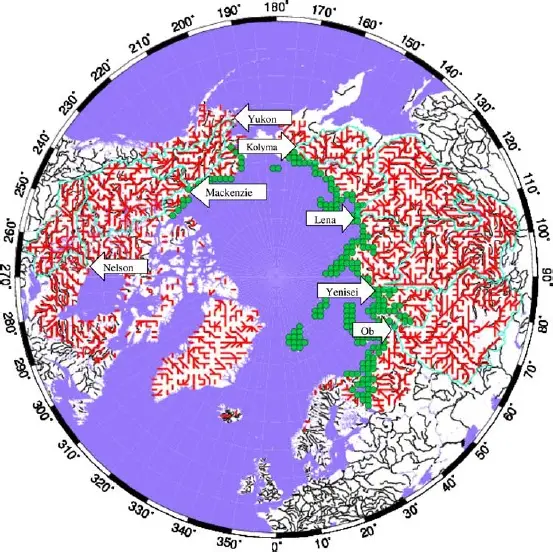Grand River Keeper Labrador has been keeping a keen eye on the weather patterns and hydrology of the Artic regions for several years given our proximity in Canada’s north. This region, often considered as sub-arctic has several common characteristics pertaining to climate, ecological features, and proximity to oceans The Arctic Ocean flow into the Atlantic certainly impacts this region with water temperatures, climate changes and the flow of the Labrador Current.
Excerpts of Article
Predicting riverine discharge to the Arctic Ocean has become increasingly important because of the dominant role that river runoff plays in the freshwater balance of the Arctic Ocean, and the predicted high sensitivity of the region to global warming. The ability of land surface models to represent runoff and streamflow from northern river basins is critical to an understanding of the Arctic hydrologic cycle.
Runoff from the Arctic terrestrial drainage system represents approximately 50% of the net flux of freshwater to the Arctic Ocean [Barry and Serreze, 2000], a large number in comparison with other world oceans, for which freshwater inputs are usually dominated by precipitation over the ocean surface. The magnitude and variation of freshwater inflows to the Arctic Ocean have significant influence on the global thermohaline circulation, salinity, and sea ice formation in the oceans

Digital river networks for the pan-Arctic drainage basins at the 100 km resolution, showing the watershed boundaries of the Kolyma, Lena, Yukon, Yenisei, Ob, Mackenzie, and Nelson. Dots represent 200 the farthest downstream outlets with the outflows to the Arctic Ocean based on the river
Authors: Fengge Su and Jennifer C. Adam, Department of Civil and Environmental Engineering, University of Washington, Seattle, Washington, USA: Laura C. Bowling, Department of Agronomy, Purdue University, West Lafayette, Indiana, USA: and Dennis P. Lettenmaier Department of Civil and Environmental Engineering, University of Washington, Seattle, Washington, USA ; published 26 April 2005
Click HERE for full article
_____________________________________________________
Mega Dams create MEGA DAMAGE! Are you concerned about the Grand River and the impacts of hydro development? Follow our blog and stay tuned to the latest reports and studies on the subject! GrandRiverKeeper Labrador Inc. monitors what’s happening and will keep you posted on topics of interest. Follow this link. https://blog.grandriverkeeperlabrador.ca/
___________________________________________
Our goal is to preserve and protect the water quality and the ecological integrity of the Grand (Churchill) River and its estuaries for present and future users and for posterity through actions of public awareness, monitoring, research, networking, intervention and habitat restoration. As such one of our key objectives is to bring awareness both locally and globally of the cumulative impacts associated with megadams that we become aware of through our research.
Views: 9
